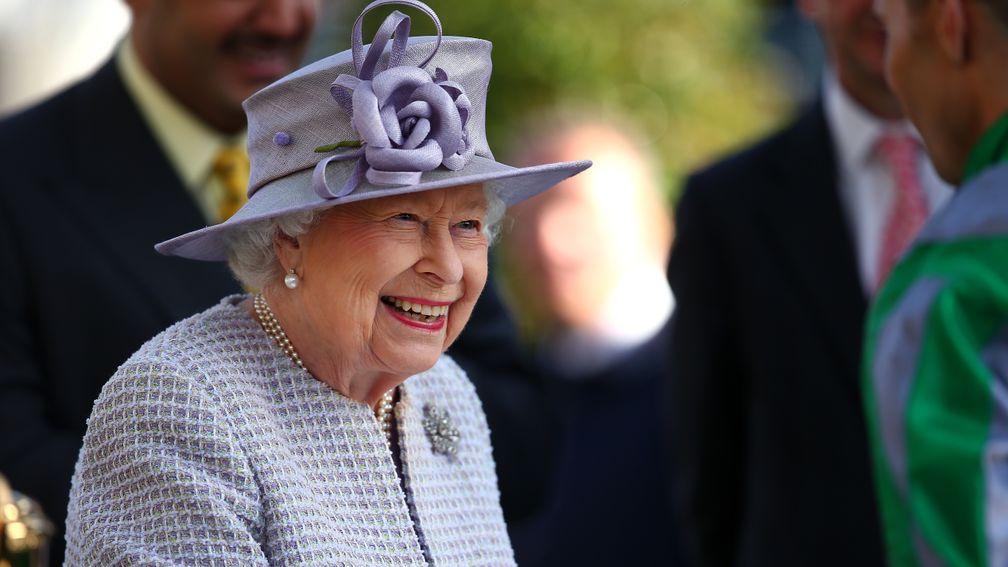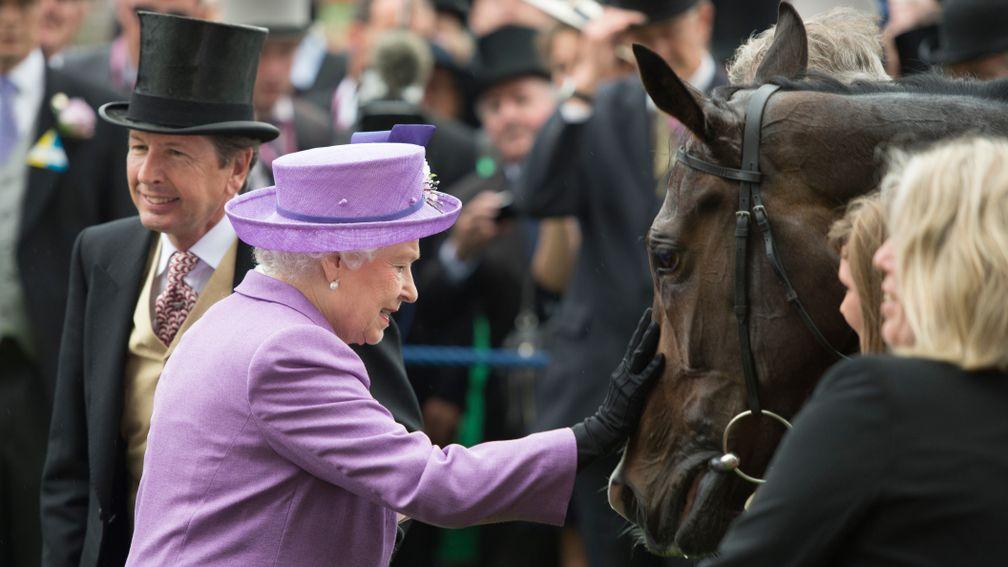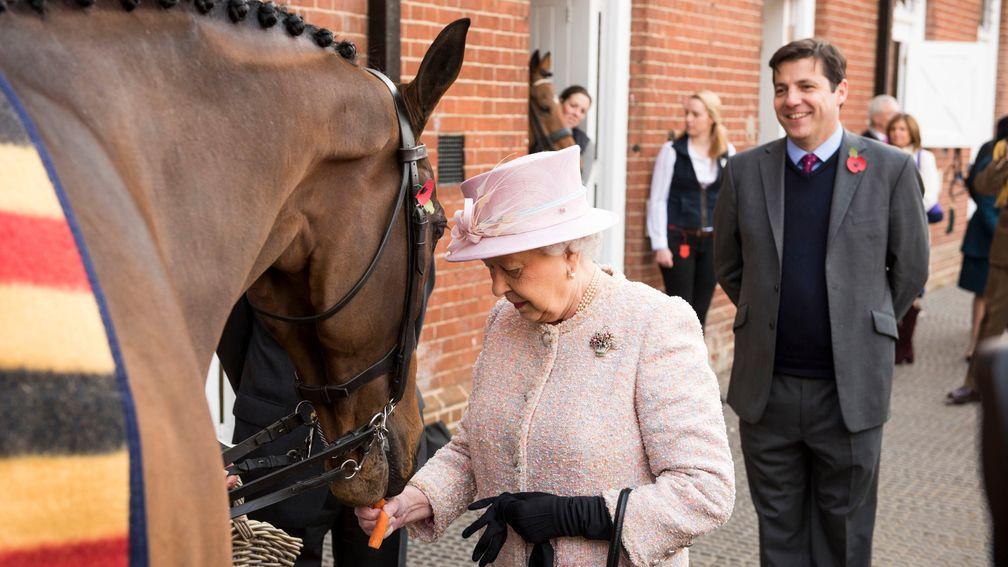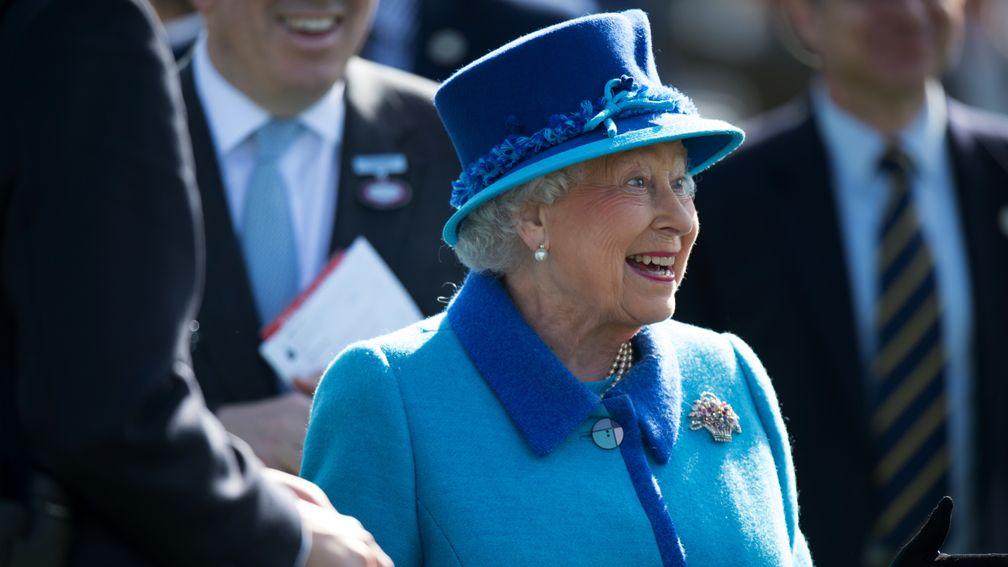The Queen was racing's own head of state and by far the sport's finest asset

A monarch is inevitably and necessarily a distant figure. Perhaps, however, those of us who love horseracing, as the Queen so very dearly loved horseracing, may have felt a connection with her that others were not fortunate to have.
Across this nation, and indeed this world, Her Majesty is now mourned.
Across racing, particularly British racing, she will be so very desperately missed.
Is it too fanciful to say we may have felt we knew her better than those without that shared passion for the thoroughbred? We certainly got to see her in a way others did not.
To witness the Queen on a racecourse was to cast your eyes on the most famous person in the world momentarily freed from the chains of service. She looked at her most relaxed, the radiant smile on her face entirely sincere and spontaneous. She looked, quite simply, like a racing fan. She was, quite simply, a racing fan.
Like a Cheltenham devotee whose first annual holiday booking each year ensures their presence at the festival, the Queen's diary always had six days blocked off. Royal Ascot and the Derby will survive without her, for there was horseracing before the Queen and there will be horseracing after the Queen, yet the idea of this sport being parted from its greatest patron, its very figurehead, is hard to compute.
If there is an image that most immediately springs to mind it is that of the Queen in Ascot's royal box during the closing stages of the 2013 Gold Cup. Twelve months on from her triumph in the Queen's Vase – which the jubilant owner received from her husband – Estimate went down in history as the most significant of all the Queen's royal meeting winners, fighting off Simenon to claim the royal meeting's signature prize by a neck.
It brought rapturous cheers from the 61,954 people in attendance. The cheers continued when we saw how much it all meant to Her Majesty. Ascot's giant screens broadcast pictures that showed the Queen watching the final furlong of the Gold Cup alongside her racing adviser John Warren.
She was dressed in lilac and covered with joy. As Estimate passed the post in front, the Queen did not simply smile, she beamed, having willed her filly home and saluted her heroics with applause. Those wonderful pictures went all around the world. Nobody had ever seen the Queen look more joyful.

She had been only five when represented on a racecourse for the first time. The then Princess Elizabeth was not at Newmarket that summer afternoon in 1931 but the filly Lilibet was named after his granddaughter by King George V.
Sixteen years on, in October 1949, the young royal had her first runner as an owner. Three days later the princess became a winner for the first time when Monaveen, owned jointly with her mother, won over fences at Fontwell before landing the Queen Elizabeth Chase at Hurst Park.
In the 1950 book 'Flat Racing Since 1900', there is a chapter called 'Some Women in Racing', penned by the Hon Mrs George Lambton.
At the end of her contribution to the volume, the author wrote: "And now I must refer to the latest recruit to the ranks of women-owners, for the whole racing world has lately acclaimed with delight the success of Princess Elizabeth.
"That she and the Queen should have entered into partnership in a steeplechase horse has given intense satisfaction to all National Hunt enthusiasts and that the horse is a good one and has already won an important race is all that could be desired.
"Monaveen's victory at Hurst Park was really a triumph for all concerned and the pleasure and enthusiasm of the Princess were delightful to behold. May there be many more victories for her, both on the Flat and over fences. What could be better than one day to see her lead in the winner of the Derby."
That Derby win never came. So many others did. Britain's four remaining Classics all have the Queen on their honour rolls. Carrozza won the Oaks under Lester Piggott in 1957, one year before Pall Mall captured the 2,000 Guineas.
The 50s had been kind to the royal racing fortunes, and although the 60s did not swing in the Queen's favour, there was a wonderful renaissance in the decade that followed, principally thanks to two marvellous fillies trained by Dick Hern, Highclere and Dunfermline.
Each won two Classics, Highclere's second providing the Queen with her greatest international success.
She was in attendance at a baking hot Chantilly for the 1974 Prix de Diane, arriving up the home straight in a Rolls-Royce in a manner French racing officials hoped would come close to mirroring Ascot's royal procession.
Having been presented with the winning owner's trophy following Highclere's dazzling two-length tour de force, the Queen was asked by an official if he could take the trophy back so that it may be adorned with her name and that of her filly. She politely let it be known this was not her desired course of action.
"I want to organise a great dinner tonight at Windsor Castle and I would like to have the trophy on the table," the Queen explained, adding with a wide smile: "Don't worry. We have very good engravers in England."

They were in her thrall at Chantilly, as throughout her marathon reign they have been all around the world. European racing's premier championship mile race, the Queen Elizabeth II Stakes, is staged at Ascot.
The highlight of Sydney's autumn carnival is the Queen Elizabeth Stakes, while there is also a Queen Elizabeth Stakes during Flemington's Melbourne Cup Carnival. Japan, Hong Kong and the United States all have prestigious prizes run as the Queen Elizabeth II Cup.
In so many parts of the world the Queen has been recognised as the first lady of racing, the sport's true head of state. Such recognition has stemmed from respect on many levels.
The Queen was a consummate horsewoman who possessed a thorough knowledge of all her horses. Her memory for matters relating to racing was phenomenal. She decided which stallions her mares should visit and then followed the progress of the progeny from the moment they were born. She was utterly fascinated.
A copy of the Racing Post was delivered to her each morning, she was in regular contact with her trainers and took the most enormous pleasure whenever one of her horses won, no matter how small the race. She was very well aware of the time, effort and patience that had made each of those wins possible. That was because she loved her horses and cared for them deeply, as she did the sport, which unintentionally entered her speech during the 2003 State Opening of Parliament.
"My government," she said, "will continue to reform the National Health Service by giving more freedom to National Hunt – National Health – Service staff." Contrary to what her audience in the House of Lords might have thought, she did not have a runner at Towcester that afternoon.
Hers was a bloodstock empire – funded entirely by her own purse – that enjoyed a revival in the final years of her life. A royal winner was always a notable winner, not just for all connected with the horse but also the sport. Such moments will be missed.

In a wider sense, the Queen's death has been dreaded by British racing for some time.
Her association with racing was of huge benefit to its standing with the public. More crudely but no less crucially, wealthy international owners and high-profile sponsors were all drawn to the industry because of the Queen.
They craved the chance to spend time in her company or even just to meet her. The Queen was racing's greatest asset by a country mile. Now she is gone, there will be some fears for the future. Now, though, is not the right time for anxiety about the future. It is a moment to reflect on a past made happy and glorious by one uniquely special lady.
Before the Queen presented the prizes for any race at Royal Ascot, the master of ceremonies would begin proceedings with the words: "May it please your majesty."
There is not a shred of doubt it pleased her very much indeed.
The Queen: her achievements on the track
First runner Astrakhan (trained by Willie Smyth, ridden by Tommy Burn) 2nd at Ascot, October 7, 1949
First winner Monaveen (Peter Cazalet/Tony Grantham) over fences at Fontwell, October 10, 1949 (owned jointly with her mother)
First big-race winner Monaveen (1949 Queen Elizabeth Chase, Hurst Park)
First winner on Flat Astrakhan (Willie Smyth/Tommy Burn) Hurst Park, April 15, 1950
First winner as Queen Choir Boy (Cecil Boyd-Rochfort/Harry Carr) Newmarket, May 13, 1952
First Royal Ascot winner Choir Boy (1953 Royal Hunt Cup)
King George VI and Queen Elizabeth Stakes winner Aureole (1954)
Classic winners Carrozza (1957 Oaks), Pall Mall (1958 2,000 Guineas), Highclere (1974 1,000 Guineas, Prix de Diane), Dunfermline (1977 Oaks, St Leger)
Coronation Cup winner Aureole (1954)
Gold Cup winner Estimate (2013)
Eclipse Stakes winner Canisbay (1965)
Sussex Stakes winner Landau (1954)
Yorkshire Oaks winner Almeria (1957)
Grand Prix de Saint-Cloud winner Hopeful Venture (1968)
US Graded stakes winners Unknown Quantity (1989 Arlington Handicap), Fictitious (2000 De La Rose Handicap), Call To Mind (2018 Belmont Gold Cup)
Group 1 winner as breeder but not owner Kingdom Of Fife (2011 Queen Elizabeth Stakes, Randwick)
Richest win £198,485 (Estimate, 2013 Gold Cup)
Notable 1-2 1958 Doncaster Cup (Agreement, Almeria)
Placed horses in Derby Aureole (2nd in 1953), Carlton House (3rd in 2011)
Grand National runner Monaveen (5th in 1950)
Cheltenham Gold Cup runner Barbers Shop (7th in 2009)
Last winner Love Affairs, Goodwood, September 6, 2022
Top-rated horses(Timeform) Dunfermline (133), Aureole (132), Pall Mall (132), Landau (129), Highclere (129), Doutelle (128), Above Suspicion (127), High Veldt (126), Atlas (126), Almeria (126)
Trainers Peter Cazalet, Willie Smyth, Sir Cecil Boyd-Rochfort, Sir Noel Murless, Walter Nightingall, Tom Masson, Norah Wilmot, Peter Hastings-Bass, Ian Balding, Dick Hern, Earl of Huntingdon, Neil Graham, Neil Howard (USA), Roger Charlton, Sir Michael Stoute, Richard Hannon senior, Christophe Clement (USA), Nicky Henderson, Andrew Balding, Hughie Morrison, Henrietta Knight, Michael Bell, John Hammond (France), Gai Waterhouse (Australia), Richard Hannon junior, William Haggas, Richard Hughes, John Gosden, Charlie Longsdon, Clive Cox, Thady Gosden, Harry Charlton
Racing manager/adviser Earl of Carnarvon 1970-2001, John Warren 2001-22
Stud manager Charles Moore 1952-62, Tony Wingfield 1962-63, Richard Shelley 1963-69, Sir Michael Oswald 1970-97, Joe Grimwade 1997-2013, Matthew Hill from 2013
Champion owner (money won) 1954, 1957
Royal Ascot wins 24
Group/Grade 1-class wins as owner 14
Most wins in a calendar year as owner 39 in 2021 (36 Flat, 3 jumps)
Total wins as owner 1,121 (GB Flat 1,022, GB jumps 71, abroad 28)
Compiled by John Randall
Published on 9 September 2022inNews
Last updated 16:19, 9 September 2022
- Merci Olivier! No final winner for Olivier Peslier but the world of racing unites in saluting the end of a great career
- The latest edition of the Racing Post is available to read online now - here's how you can access it
- How Smart View recorded a 76 per cent profit at the Cheltenham Festival
- Smart View is available on the Racing Post app - how to read the revolutionary new racecard
- Levy reform talks 'accelerating' as clock ticks down to April deadline for agreement
- Merci Olivier! No final winner for Olivier Peslier but the world of racing unites in saluting the end of a great career
- The latest edition of the Racing Post is available to read online now - here's how you can access it
- How Smart View recorded a 76 per cent profit at the Cheltenham Festival
- Smart View is available on the Racing Post app - how to read the revolutionary new racecard
- Levy reform talks 'accelerating' as clock ticks down to April deadline for agreement